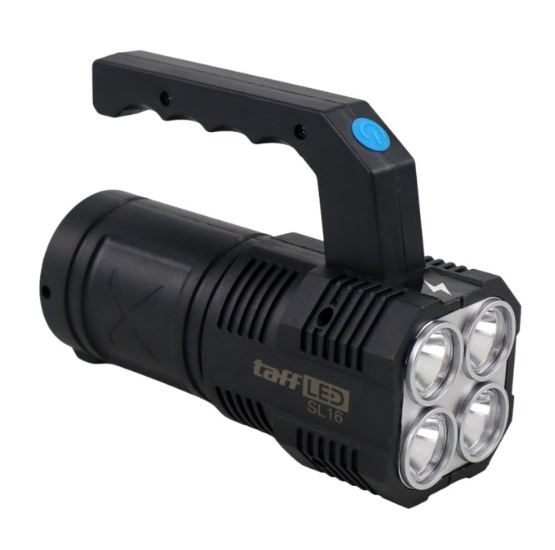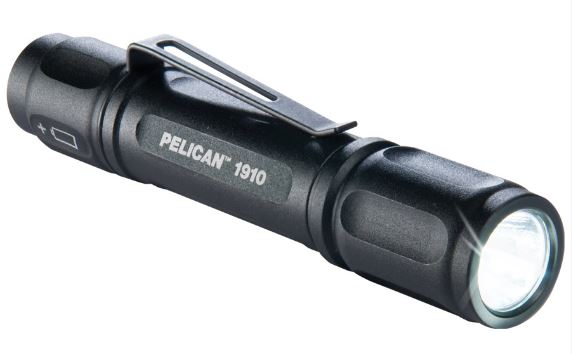When it comes to handheld lighting, LED flashlights have arisen as a revolutionary technology, innovating the manner we brighten our surroundings. These compact, yet strong devices have become an essential tool for experts, outdoor fans, and everyday users alike. With their outstanding energy proficiency, toughness, and versatility, LED flashlights have quickly surpassed their incandescent counterparts, cementing their position as the future of portable lighting.One of a good product of LED flashlight is Nitecore EDC 27, it is a compact and powerful everyday carry flashlight, offering a maximum output of 3000 lumens and a range of useful features for various lighting needs.

At the heart of an LED flashlight lies the light-emitting diode (LED), a semiconductor device that transforms electricity into light. Different from traditional incandescent bulbs, which depend on a filament that gets hot to produce light, LEDs produce light through a process called electroluminescence. This fundamental difference in technology is what makes LED flashlights apart from their predecessors, offering numerous advantages that have made them the chosen choice for a wide range of applications.
Merits of LED Flashlights
One of the most significant benefits of LED flashlights is their exceptional energy efficiency. LEDs require significantly less power than incandescent bulbs, allowing them to function for lengthy periods on a single set of batteries. This efficiency translates into extended runtime, making LED flashlights optimal for situations where reliable, enduring illumination is essential, such as camping trips, power outages, or emergency situations. Moreover, the reduced power consumption of LEDs means that users can cut costs on replacement batteries, making them an affordable choice in the long run.In addition to their energy efficiency, LED flashlights are recognized for their durability and strength. Traditional incandescent bulbs are breakable and susceptible to breakage, especially when under shock or vibration. In contrast, LEDs are robust devices with no mechanical elements or delicate filaments, making them highly resistant to impact and vibration. This sturdy construction allows LED flashlights to endure the demands of outdoor use, including inadvertent drops, bumps, and exposure to harsh weather conditions. Whether you're hiking through rugged terrain, working on a construction site, or simply navigating a dark path, an LED flashlight can provide dependable illumination without the risk of unexpected failure.
Another advantage of LED flashlights is their remarkable brightness and beam quality. Improvements in LED technology have led to the production of strong LEDs that can create bright, focused beams of light. These powerful LEDs, combined with precision-engineered reflectors and lenses, allow LED flashlights to generate a brilliant, uniform beam that can illuminate objects at a considerable distance. The ability to cast a strong, focused beam is particularly valuable in outdoor settings, where users need to identify potential hazards or navigate through dark, unfamiliar environments. Furthermore, many LED flashlights offer adjustable beam patterns, allowing users to alternate between an expansive flood beam for proximate work and a concentrated spot beam for distant illumination, providing flexibility for different lighting needs.
The small size and lightweight design of LED flashlights are also significant advantages over their incandescent counterparts. LEDs are much smaller than traditional bulbs, permitting manufacturers to create flashlights that are more compact and more convenient to carry. This portability is notably beneficial for experts who need to bring a flashlight as part of their daily gear, such as law enforcement officers, firefighters, and utility workers. The featherweight nature of LED flashlights also makes them less fatiguing to hold and use for prolonged periods, reducing hand fatigue and strain.
In terms of longevity, LED flashlights have a clear edge over incandescent models. LEDs have an exceptional lifespan, often enduring tens of thousands of hours before requiring replacement. This extended lifespan means that users can trust their LED flashlights for years without the need for regular bulb changes. In contrast, incandescent bulbs have a much shorter lifespan, typically persisting only a few hundred hours before failing. The prolonged lifespan of LEDs not only provides ease but also contributes to the overall economy of LED flashlights, as users can evade the expense and hassle of continually replacing bulbs.
Versatility and Functions
The flexibility of LED flashlights exceeds their main function of providing illumination. Many modern LED flashlights come fitted with additional features that improve their functionality and adaptability. Some models include various lighting modes, such as high, moderate, and low brightness settings, as well as strobe or SOS modes for emergency signaling. These diverse lighting modes allow users to tailor the flashlight's output to match their unique needs, preserving battery life when complete brightness is not required. Additionally, some LED flashlights include rechargeable batteries, eliminating the need for single-use batteries and providing a further environmentally friendly and affordable solution.
The durability and dependability of LED flashlights make them an indispensable tool in numerous professional fields. Law enforcement officers, for example, count on LED flashlights for tactical operations, suspect searches, and crime scene investigations. The brilliant, focused beam of an LED flashlight can aid officers identify potential threats and collect evidence in dark conditions. Similarly, firefighters and emergency responders use LED flashlights to navigate through smoke-filled buildings, find victims, and analyze hazardous situations. The tough construction and water-resistant properties of many LED flashlights guarantee that they can survive the extreme conditions encountered in these demanding professions.

Outdoor fans, such as hikers, campers, and hunters, have also welcomed LED flashlights as an essential part of their gear. The long runtime and brilliant illumination provided by LED flashlights are priceless when investigating remote wilderness areas, arranging camp in the dark, or tracking game during early morning or late evening hours. The compact size and lightweight design of LED flashlights make them easy to pack and carry, guaranteeing that outdoor adventurers always have a dependable source of light at their disposal.
In the realm of home and personal use, LED flashlights have become an essential for emergency preparedness and daily convenience. During power outages or natural disasters, an LED flashlight can provide crucial illumination, enabling families to securely navigate their homes, find supplies, and communicate for help if needed. The extended runtime of LED flashlights guarantees that users have a reliable light source even during prolonged periods without electricity. Furthermore, LED flashlights are useful for various household tasks, such as examining dark corners, reading in dim conditions, or performing minor repairs in dimly lit areas. For more detailed information, reviews, and specifications, be sure to visit https://medium.com/@blackbookz.one/nitecore-edc27-3-000-lumen-flat-edc-rechargeable-flashlight-high-performance-compact-pocket-light-ecf750d57b54, where you can explore all the features and benefits that make the Nitecore EDC27 an exceptional lighting tool.
Future of LED Flashlights
As technology continues to advance, the future of LED flashlights looks more luminous than ever. Manufacturers are perpetually extending the boundaries of LED performance, creating more powerful and efficient LEDs that offer even higher brightness and extended runtimes. Innovations in battery technology, such as the adoption of rechargeable batteries, are additionally improving the performance and convenience of LED flashlights. Additionally, the inclusion of intelligent features, such as customizable settings and mobile-controlled controls, is changing LED flashlights into very personalizable and user-friendly devices.Overall, the Nitecore EDC27 flashlight is an impressive everyday carry flashlight that offers exceptional brightness, a range of useful features, and a durable design, making it a dependable lighting companion for any situation.




